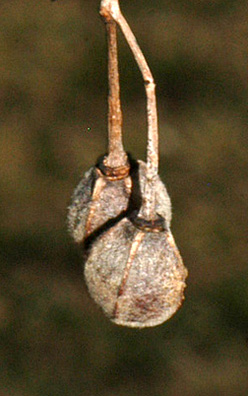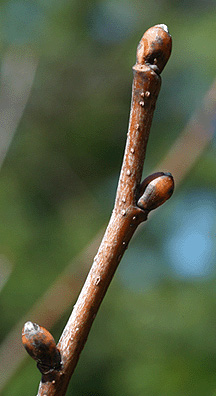European linden Tiliaceae Tilia xeuropaea
Leaf:Alternate, simple, asymmetrical cordate, 2.5 to 4 inches long, with finely serrate margins, pinnately veined, inequilateral base, green above, paler below with white pubescence in vein axils.
Flower:Species is monoecious; pale yellow, borne below a long, gracefully curving leafy wing in a many (5 to 10) branched cluster, consistently hanging downward below bracts, several inches long, appearing in early to mid-summer.
Fruit:A round, 5 ribbed nutlet (1/5 inch) that is covered with gray-brown hair; occur in a hanging cluster of 2 or 3 with a curving, leafy bract acting as a wing on top of the cluster, ripening in the fall.
Twig:Slender, zigzag, green-brown or red-tinged (particularly in the winter); terminal bud is false (1/6 inch long), buds are plump with one side bulging conspicuously, red to red brown in winter, edible and when eaten they are mucilaginous.
Bark:Gray or brown, long, flat topped ridges with shallow furrows; young stems are brown with shallow splits. Inner bark is quite fibrous.
Form:A medium to large tree that can reach over 100 feet tall with a dense, broadly columnar to round crown. In the U.S. it is typically only seen when open grown where it is often as wide as it is tall. Numerous burls around base with many sprouts.







Notes: